
Endocrine organs and basics of the hormones secreted from the main endocrine organs.
- Subject:
- Anatomy/Physiology
- Life Science
- Material Type:
- Diagram/Illustration
- Author:
- Dr. Hamid Nawaz
- Date Added:
- 04/26/2022

Endocrine organs and basics of the hormones secreted from the main endocrine organs.
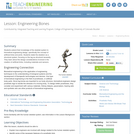
Students extend their knowledge of the skeletal system to biomedical engineering design, specifically the concept of artificial limbs. Students relate the skeleton as a structural system, focusing on the leg as structural necessity. They learn about the design considerations involved in the creation of artificial limbs, including materials and sensors.
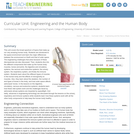
This unit covers the broad spectrum of topics that make-up our very amazing human body. Students are introduced to the space environment and learn the major differences between the environment on Earth and that of outer space. The engineering challenges that arise because of these discrepancies are also discussed. Then, students dive into the different components that make up the human body: muscles, bones and joints, the digestive and circulatory systems, the nervous and endocrine systems, the urinary system, the respiratory system, and finally the immune system. Students learn about the different types of muscles in the human body and the effects of microgravity on muscles. Also, they learn about the skeleton, the number of and types of bones in the body, and how outer space affects astronauts' bones. In the lessons on the digestive, circulatory, nervous and endocrine systems, students learn how these vital system work and the challenges faced by astronauts whose systems are impacted by spaceflight. And lastly, advances in engineering technology are discussed through the lessons on the urinary, respiratory and immune systems while students learn how these systems work with all the other body components to help keep the human body healthy.
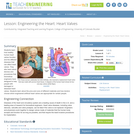
Students learn how healthy human heart valves function and the different diseases that can affect heart valves. They also learn about devices and procedures that biomedical engineers have designed to help people with damaged or diseased heart valves. Students learn about the pros and cons of different materials and how doctors choose which engineered artificial heart valves are appropriate for certain people.
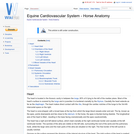
This page gives a complete look at the cardiovascular system of horses.

This is a learning "adventure" (i.e. interactive learning) for body tissues created for an Anatomy & Physiology 1 course. It can be modified for different concepts and is suitable for use in lecture, lab, or outside of class time as an independent assignment.

This resource is a video abstract of a research paper created by Research Square on behalf of its authors. It provides a synopsis that's easy to understand, and can be used to introduce the topics it covers to students, researchers, and the general public. The video's transcript is also provided in full, with a portion provided below for preview:
"Statins are the first-line treatment for hypercholesterolemia in patients at high risk for cardiovascular mortality. But some patients require additional LDL cholesterol lowering to reach risk-stratified LDL-cholesterol levels or to further reduce cardiovascular risk. Clinical trials have demonstrated that the PCSK9 inhibitor evolocumab effectively lowers LDL cholesterol and is well tolerated. A new analysis of data from a subset of these trials extends these findings by evaluating LDL cholesterol lowering in patients receiving different evolocumab dosage regimens. Researchers performed a pooled analysis of data from four randomized 12-week phase 3 clinical trials comparing evolocumab to placebo or ezetimibe. Two subcutaneous evolocumab dosage regimens were examined: 140 mg every two weeks, and 420 mg monthly. Patients received evolocumab either as monotherapy or with background lipidlowering therapies, consisting of a statin alone or with ezetimibe..."
The rest of the transcript, along with a link to the research itself, is available on the resource itself.

Short Description:
Exercise Delivery is a valuable resource for students studying in any exercise professions, particularly exercise science and exercise physiology. Rather than focussing on the theory that underpins prescription and anatomy, this resource focusses on how best to deliver exercises for individuals, including advice and guidance on how to change exercises to achieve the outcomes you need.
Long Description:
Exercise Delivery is an open access, introductory text intended for students and professionals in the field of exercise science and exercise physiology. It contains instructional videos on the delivery of exercises and their variations, with supplementary activities on the selection of exercises, muscle recruitment and activation during exercises, and the adaptation of exercises for various populations. The book is sectioned into resistance exercise delivery for each of the key muscle groups of the human body, and aerobic exercise delivery.
Word Count: 2386
ISBN: 978-1-74272-365-5
(Note: This resource's metadata has been created automatically by reformatting and/or combining the information that the author initially provided as part of a bulk import process.)
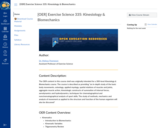
The OER content in this course shell was originally intended for a 300-level Kinesiology & Biomechanics course. The course is described as providing "an in-depth study of the basic body movements, osteology, applied myology, spatial relations of muscles and joints, aggregate muscle action, kinesiologic constructs of summation of internal forces, aerodynamics and hydrodynamics, techniques for cinematographical and noncinematographical analysis of sport skills. The study of methods, mechanics and analysis of movement as applied to the structure and function of the human organism will also be discussed."

This chapter details the effects that exercise on neuroplasticity, mental health, and neuroprotection.

Using the question of how exercise and sporting events might be affected by climate, students are led to the basic questions of what causes climate change, how our climate might change, and what affect that might have on athletes and anyone undertaking strenuous exercise.
(Note: this resource was added to OER Commons as part of a batch upload of over 2,200 records. If you notice an issue with the quality of the metadata, please let us know by using the 'report' button and we will flag it for consideration.)

Video for eye care allied professionals on checking for eye alignment
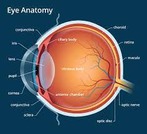
Basic anatomy of the eye.

Basic anatomy of the face muscles. frontalis, procereus, nasalis, zygomaticus minor, mentalis, depressor labii inferioris, depressor angularis oris, levator...

This resource is a video abstract of a research paper created by Research Square on behalf of its authors. It provides a synopsis that's easy to understand, and can be used to introduce the topics it covers to students, researchers, and the general public. The video's transcript is also provided in full, with a portion provided below for preview:
"Increased blood flow to the uterus during pregnancy is essential to the health of both mother and baby But the cellular processes that promote blood flow during pregnancy aren’t fully understood Now, researchers have discovered that fat surrounding blood vessels in the uterus plays a key role In pregnant rats, uterine blood flow was up to 3 times higher than in non-pregnant rats But blood flow plummeted when fat tissue was removed from the uterus of pregnant rats Interestingly, tests on isolated vessels demonstrated that fat tissue-shrinking factors could be at play which seems counterintuitive because narrow vessels generally mean low blood flow One explanation is that isolating tissue from its natural surroundings could produce changes not observed in a live animal Future studies will explore this apparent contradiction and hopefully reveal the role of fat tissue in human pregnancy Osikoya et al..."
The rest of the transcript, along with a link to the research itself, is available on the resource itself.

Fear is a physiological, behavioral, and emotional reaction to stimuli that an animal encounters (Horwitz, 2013). In many species across the animal kingdom, the physiological reaction results in an increase in heart rate, increased respiratory rate (panting), sweating, trembling, pacing, and possibly urination and defecation. Fear is an appropriate response to environments and stimuli that are potentially harmful to the animal, which could utilize a creature’s fight or flight response and preserve its life. In this resource, fear of human and nonhuman animals, along with potential treatments for fear disorders, is explored and reviewed.
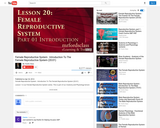
The last video in our anatomy and physiology lecture series focuses on the female reproductive system. This video introduces us to the female reproductive system. We take a quick look at the components of the female reproductive system and the functions of the female reproductive system.
Lesson 1 in our Female Reproductive System series. This is part of our Anatomy and Physiology lecture series.
If this video helps you please be sure to LST -like subscribe and tell your friends. Your support helps us make more videos. For the complete series please visit http://mrfordsclass.net/
Other Free Videos in the Male Reproductive System series:
-Introduction to the Female Reproductive System (20:01): http://youtu.be/Bg09ecSDEO8
-The Ovaries (20:02): http://youtu.be/Ml29ezbvMuY
-The Uterus (20:03): http://youtu.be/bdeDSx3eKDk
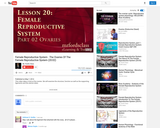
This video takes a look at the ovaries. We will examine the structure, function as well as the supporting ligaments and the uterine tubes.
Lesson 2 in our Female Reproductive System series. This is part of our Anatomy and Physiology lecture series.
If this video helps you please be sure to LST -like subscribe and tell your friends. Your support helps us make more videos. For the complete series please visit http://mrfordsclass.net/
Other Free Videos in the Male Reproductive System series:
-Introduction to the Female Reproductive System (20:01): http://youtu.be/Bg09ecSDEO8
-The Ovaries (20:02): http://youtu.be/Ml29ezbvMuY
-The Uterus (20:03): http://youtu.be/bdeDSx3eKDk

This video take a brief look at the uterus. We examine the structure and functions.
Lesson 3 in our Female Reproductive System series. This is part of our Anatomy and Physiology lecture series.
If this video helps you please be sure to LST -like subscribe and tell your friends. Your support helps us make more videos. For the complete series please visit http://mrfordsclass.net/
Other Free Videos in the Male Reproductive System series:
-Introduction to the Female Reproductive System (20:01): http://youtu.be/Bg09ecSDEO8
-The Ovaries (20:02): http://youtu.be/Ml29ezbvMuY
-The Uterus (20:03): http://youtu.be/bdeDSx3eKDk
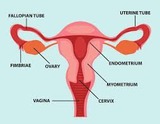
Basic anatomy of the female reproductive system, frontal view.